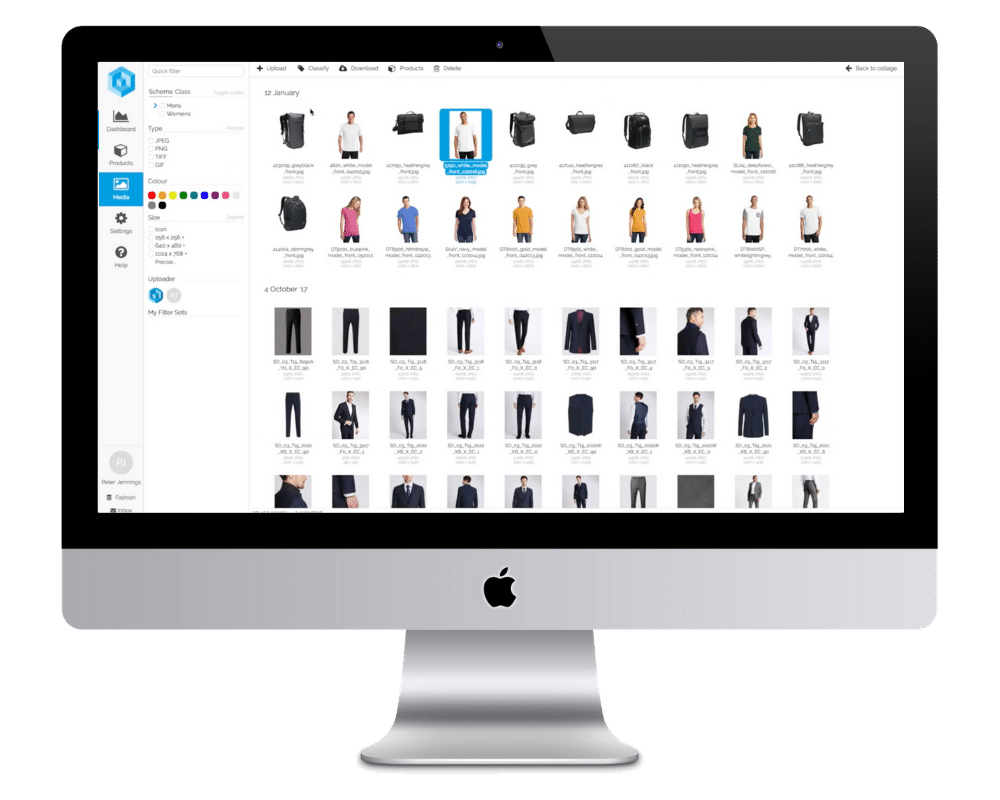Key Takeaways
-
Product ideas are the foundation of profitable growth. They determine which new products and product variants enter your pipeline.
-
Structured validation reduces risk. Combining customer feedback, market analysis, and digital tools helps ensure product ideas will resonate.

-
PIM systems streamline execution. Once a product idea is chosen, Product Information Management (PIM) enables faster launches and richer customer experiences.
What Are Profitable Product Ideas?
A profitable product idea is the starting concept for a new item or product variant you might bring to market to help increase overall revenue. It could stem from customer feedback, competitor analysis, or internal innovation. For example, a sporting goods company might generate product ideas by examining seasonal trends like hiking gear for spring or expanding into eco-friendly materials.
Use Cases
-
Retailers: Identify trending categories to expand assortments (e.g., smart home devices).
-
Manufacturers: Explore new product variants such as size, color, or material changes to meet diverse market needs.
-
Distributors: Add profitable products to their catalogs to serve niche B2B customers.
Why Good Product Ideas Matter for eCommerce Leaders
The right product ideas directly impact revenue growth and customer satisfaction. Poorly researched ideas can lead to wasted resources, high returns, and reputational damage.

Challenge #1: Information Overload
Businesses often drown in market data, making it hard to distinguish genuine opportunities from noise.
Solution via PIM and Data Analysis
A centralized Product Information Management (PIM) system consolidates insights from customer reviews, sales performance, and supplier feedback. By analyzing this structured product data, teams can validate product ideas faster and prioritize those with the highest margin potential.
Benefits of Pursuing the Right Product Ideas
Key Feature #1: Faster Time-to-Market
When product ideas are validated and enriched with accurate data from the start, businesses accelerate launches and minimize costly delays.
Use Case Example
A fashion retailer might identify a growing demand for sustainable denim. By leveraging a PIM platform, they can quickly enrich product pages with fabric details, certifications, and lifestyle images, ensuring customers have the confidence to purchase.
10 Proven Ways to Generate and Validate Product Ideas
Here are ten strategies businesses can adopt in 2025 to consistently uncover product ideas that drive profitable growth:
-
Analyze Customer Feedback
Reviews, surveys, and social listening uncover unmet needs. For example, repeated complaints about shoe durability may inspire a new, reinforced variant. -
Monitor Competitors
Study top sellers on Amazon or other marketplaces to spot trends. If competitors succeed with smart kitchen gadgets, evaluate how your brand could differentiate. -
Leverage Market Research Reports
External research from sources like Gartner or Statista helps you anticipate industry shifts and avoid chasing short-lived fads. -
Identify Seasonal and Regional Opportunities
Product demand often spikes during holidays or in specific climates. Retailers can prepare variants like winter-ready electronics accessories or region-specific food products. -
Use AI for Trend Spotting
AI-driven analytics can scan billions of data points—social media hashtags, influencer posts, and search queries—to highlight emerging product ideas. -
Expand Existing Product Variants
Adding new colors, sizes, or packaging formats can refresh core products. For example, a beverage company might test limited-edition flavors based on trending ingredients. -
Collaborate with Suppliers
Suppliers often see raw material or component trends before brands do. Partnering with them can yield first-mover advantage.

-
Test via Crowdfunding Platforms
Sites like Kickstarter validate demand before mass production, making them a cost-effective way to test product ideas. -
Review Internal Sales Data
High-performing SKUs may inspire complementary product ideas. For instance, a best-selling gaming console accessory could lead to matching peripherals. -
Leverage PIM for Enriched Product Discovery
With a PIM solution, businesses can manage product attributes, imagery, and metadata at scale. This makes it easier to test and launch new ideas across multiple channels quickly.
FAQs on Product Ideas
Q: What’s the difference between a product idea and a product variant?
A: A product idea is the initial concept for something new, while a product variant is a version of an existing product (e.g., a new color or size). Both are critical for expanding assortments and meeting diverse customer needs.
Q: How do I know if a product idea will be profitable?
A: Profitability comes from balancing demand, cost of goods, and competitive positioning. Businesses should evaluate margins, validate customer interest, and assess operational feasibility before launching.
Takeaways for eCommerce Managers Exploring Product Ideas
To summarize, strong product ideas form the backbone of growth in eCommerce. By systematically researching, validating, and executing these ideas, businesses reduce risk and increase profitability. Leveraging tools like PIM platforms ensures enriched data, faster time-to-market, and a seamless customer experience across every channel.













